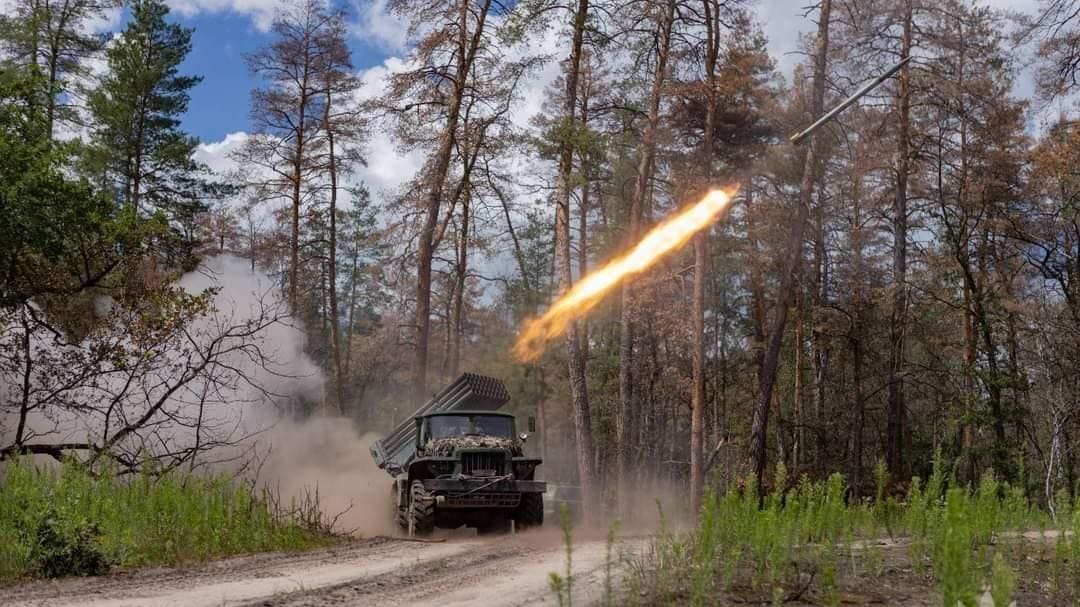Two months into Ukraine’s long-anticipated southern counteroffensive—and Russia’s more recent, small-scale northeastern countercounteroffensive—three things have become clear.
One: Ukrainian forces are advancing across the south and even more so around Bakhmut in eastern Ukraine’s Donbas region, but painfully slowly. Russian forces themselves have advanced a few miles west of Kreminna in northeastern Ukraine.
Two: both sides are suffering heavy casualties. And roughly equal casualties, despite defending forces usually having an advantage over attacking forces.
Three: the Ukrainians are winning at least one battle inside the wider counteroffensive. The counterbattery fight. In the artillery-on-artillery battle that has raged since Russia widened its war on Ukraine 18 months ago, and which has escalated since June, Ukrainian guns are knocking out three Russian guns for every one Ukrainian gun the Russians knock out.
Chalk it up to Ukraine’s growing arsenal of modern Western-style howitzers and precision-guided shells—and excellent intelligence from Ukrainian drones and, presumably, distant NATO assets. Or chalk it up to the Ukrainian military’s learning advantage over the Russian military—the Ukrainians’ superior ability to internalize and apply battlefield experience.
Either way, Jack Watling, an analyst at the Royal United Services Institute in Washington, D.C., noted the intensifying artillery battle as early as June 14. “There is an intense counterbattery duel being fought,” he wrote.
Since Ukraine launched its southern counteroffensive on June 4, its forces have destroyed, badly damaged or captured no fewer than 91 Russian artillery pieces—17 towed guns, 40 self-propelled guns and 34 rocket-launchers—that the analysts at Oryx can confirm.
Russian forces meanwhile have destroyed, badly damaged or captured no fewer than 29 Ukrainian artillery pieces—12 towed guns, 16 self-propelled guns and one rocket-launcher.
Strikingly, Russia is losing the counterbattery battle despite reforming its fire-support tactics in the second year of its wider war on Ukraine. “Russian artillery has … improved its ability to fire from multiple positions and to fire and move, reducing susceptibility to counterbattery fire,” Watling and his colleague Nick Reynolds wrote.
“Russian artillery is also increasingly relying on loitering munitions for counterbattery fires,” the RUSI analysts added. But improvements in Ukrainian artillery fire-control clearly have kept pace with Russia’s new tactics—and then some.
Russia widened its war in Ukraine with around 4,000 active artillery pieces. Ukraine had fewer than 2,000. In 18 months of war, Ukraine has lost around 400 big guns and launchers, but has restored some of its old war-reserve artillery and also received from its foreign allies around 1,100 guns and launchers as replacements. And many of the donated artillery pieces are the latest Western models.
In the same year-and-a-half of major combat, the Russian artillery corps has lost at least a thousand guns and launchers. To replace these losses, according to Youtuber Covert Cabal, the Kremlin with its depleted industrial base has had no choice but to sort through old storage sites and attempt to reactive 5,400 guns, almost all of them older towed models.
Do the math. Assuming most of the old stored guns are useable, the Russians still have perhaps a two-to-one advantage in artillery pieces. But every day the Ukrainians take out three times as many Russian guns as the Russians take out Ukrainian guns, that advantage erodes.
Whether the Russians have a two-to-one advantage in shells is less clear.
As pre-war ammunition stockpiles on both sides have dwindled, the Ukrainians are leaning on Europe and the United States to supply shells. The Russians are leaning on … Iran and North Korea. The ammo race is an industrial race, and it’s not clear yet which side is winning.
One Russian blogger, who goes by “Bulba of Thrones,” is losing optimism. “The genocide of the artillery of the Russian Federation continues and is gaining momentum,” he wrote on July 25.
Read the full article here





